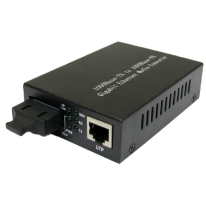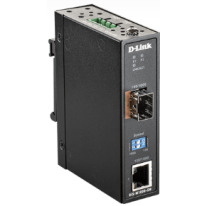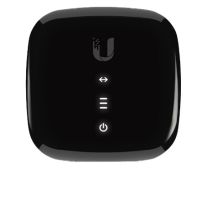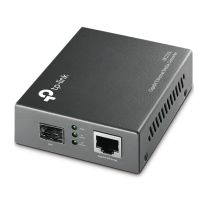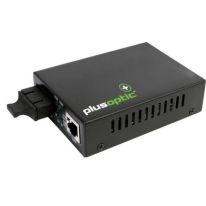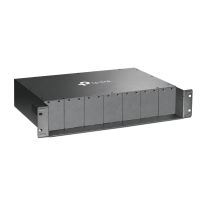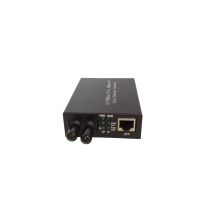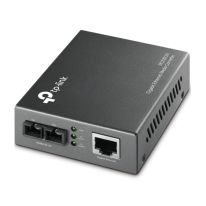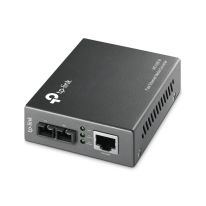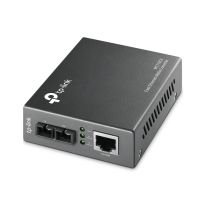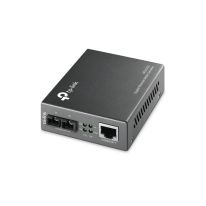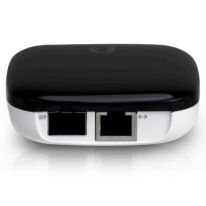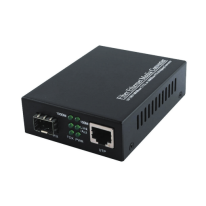Shop a wide range of different types of media converters
Media converters enable you to connect different types of media, such as twisted pair, fibre, and coax, within a network. This provides you with the ability to extend your Ethernet network beyond the standard 100 metre limit imposed by copper cables and Cat6 cables.
In addition to CAT6 cables and CAT6 patch panels, 4Cabling stocks a variety of RJ45 converters and sfp modules that are simple to use. We also have DAC cables, AOC cables and fibre media converters that are designed to convert 100BASE-FX fibre to 100Base-TX copper media or in reverse. Whether you’re looking for singlemode or multimode fibre converters, we’ve also got you covered.
Need some clarification with a product or have a question about our range of media converters and coaxial cable convertors? Get in contact with our team for expert advice.
What does a media converter do?
A media converter is a networking device that is used to connect two different types of network media, such as copper and fibre optic cable. Media converters are often used to extend the distance of a network, or to connect devices that use different networking technologies.
There are many different types of media converters, each designed to support specific types of network media and protocols. Some common examples include:
- Copper to fibre: These converters are used to connect devices that use copper-based networking cables, such as Ethernet cables, to devices that use fibre optic cables.
- Ethernet to serial: These converters are used to connect devices that use Ethernet networking to devices that use serial communication protocols, such as RS-232 or RS-485.
- Wireless to Ethernet: These converters are used to connect wireless devices, such as access points or routers, to Ethernet-based networks.
- Multimode to singlemode: These converters are used to connect devices that use multimode fibre optic cables to devices that use singlemode cables.
Why is a converter needed?
There are several reasons why a media converter may be needed:
- To connect different types of network media: Media converters are often used to connect devices that use different types of network media, such as copper and fibre optic cable. This is especially useful in cases where the distance between devices exceeds the maximum distance that a single type of media can transmit data.
- To connect devices that use different networking technologies: Media converters can be used to connect devices that use different networking technologies, such as Ethernet and serial communication protocols. This can be useful in cases where a device only supports a specific type of networking technology, or where it is necessary to connect devices that use different technologies.
- To extend the distance of a network: Media converters can be used to extend the distance of a network beyond the limitations of a single type of media. For example, a media converter can be used to connect devices that are located several kilometres apart using fibre optic cable, which has a much longer transmission distance than copper-based media.
- To connect devices in different locations: Media converters can be used to connect devices that are located in different buildings or even different cities, using a combination of different types of media and networking technologies.
What is the difference between DAC and AOC?
DAC and AOC are two types of cables that are used to connect devices in a network. DAC stands for Direct Attach Cable, while AOC stands for Active Optical Cable. Both types of cables are used to connect devices that use high-speed networking protocols, such as Ethernet, Fibre Channel, and InfiniBand.
The main difference between DAC and AOC is the way they transmit data. DAC cables use copper wire to transmit data, while AOC cables use fibre optic strands. DAC cables are generally more affordable and easier to install than AOC cables, but they are also limited in terms of distance and bandwidth. DAC cables are typically used for short-distance connections, such as between servers in the same rack or between switches in the same data centre.
AOC cables, on the other hand, use fibre optic strands to transmit data, which allows them to support much higher speeds and longer distances than DAC cables. AOC cables are often used for longer-distance connections, such as between data centres or between buildings.
What is the difference between a media converter and a switch?
A media converter and a switch are two different types of networking devices that are used to connect devices in a network. The main difference between the two is the way they transmit data and the number of devices they can connect.
A media converter is a device that is used to connect two different types of network media, such as copper and fibre optic cable. Media converters are often used to extend the distance of a network, or to connect devices that use different networking technologies. They are typically used for point-to-point connections, meaning they can only connect two devices at a time.
A switch, meanwhile, is a device that is used to connect multiple devices together on a network. Switches can support multiple ports, allowing them to connect several devices at once. They are used to create networks of devices, and are often used to connect devices such as computers, servers, and printers together.


